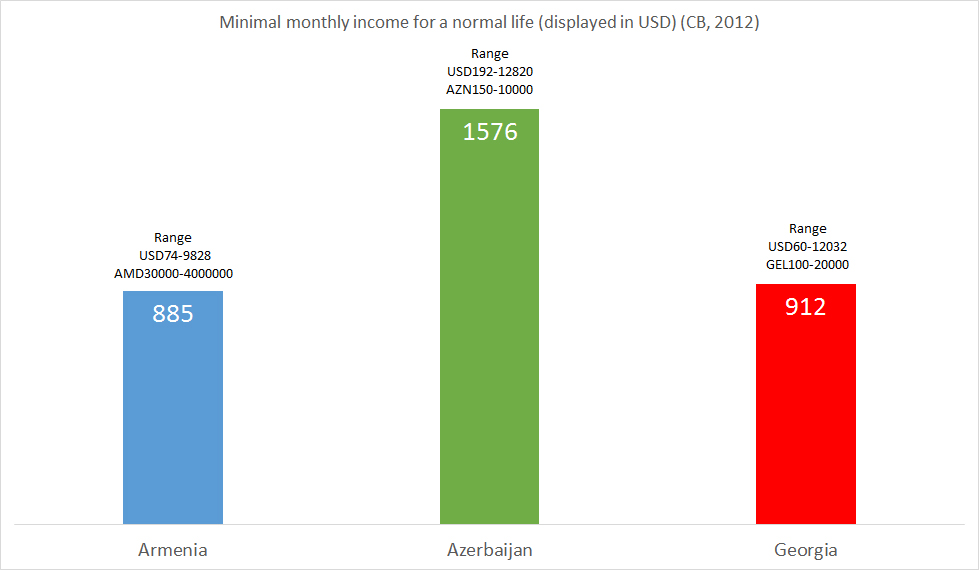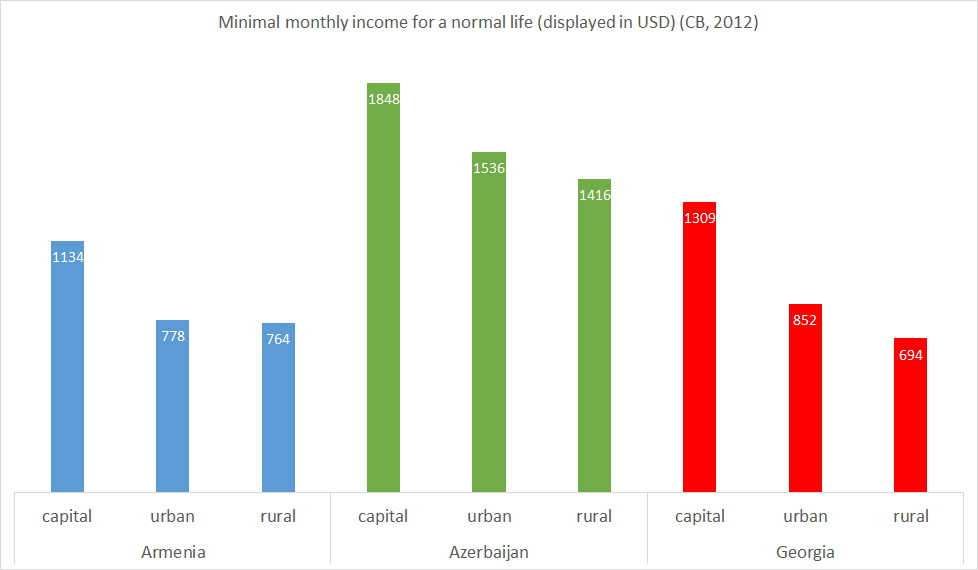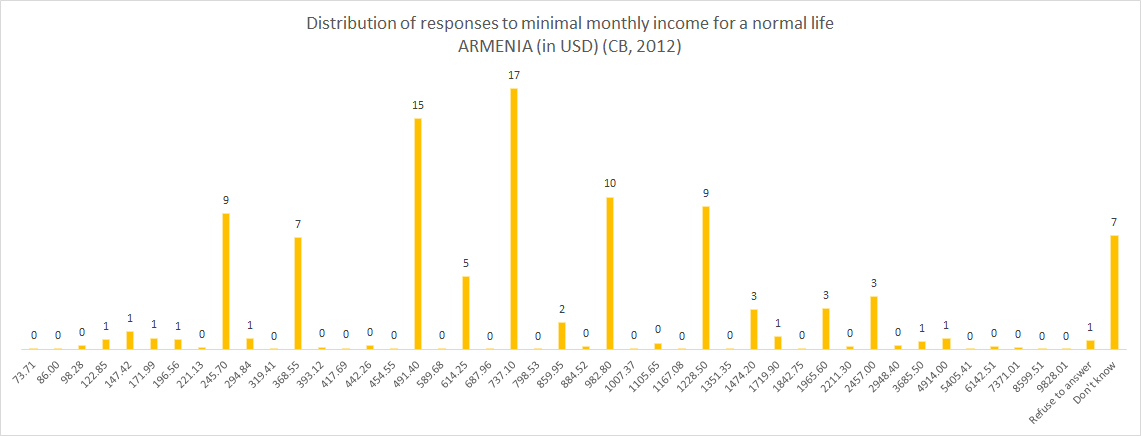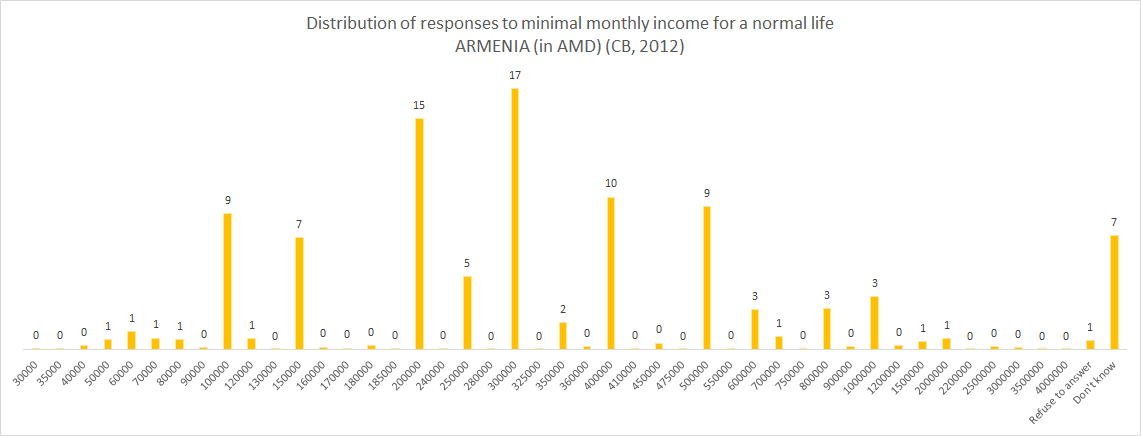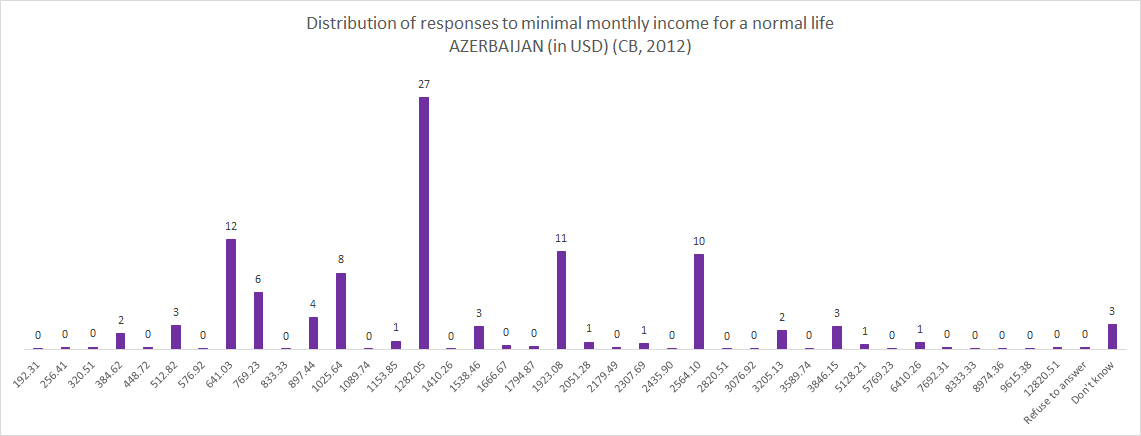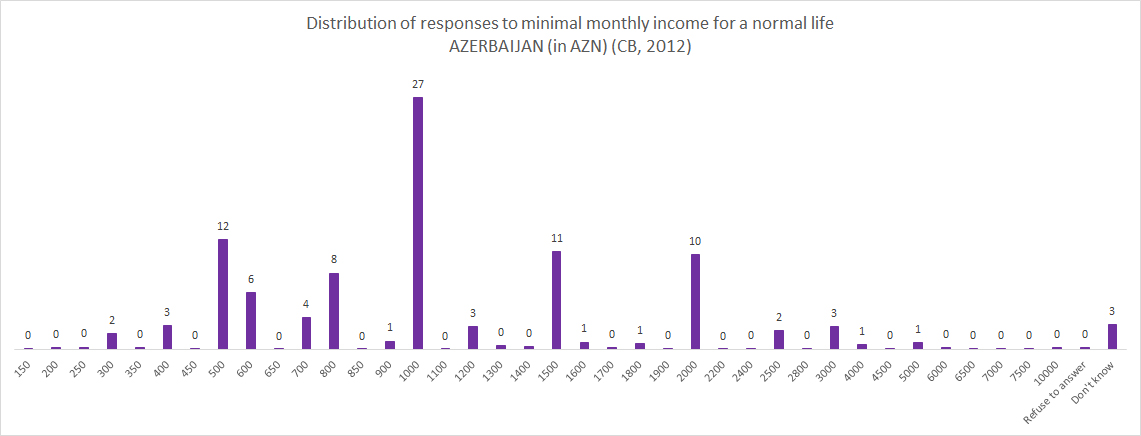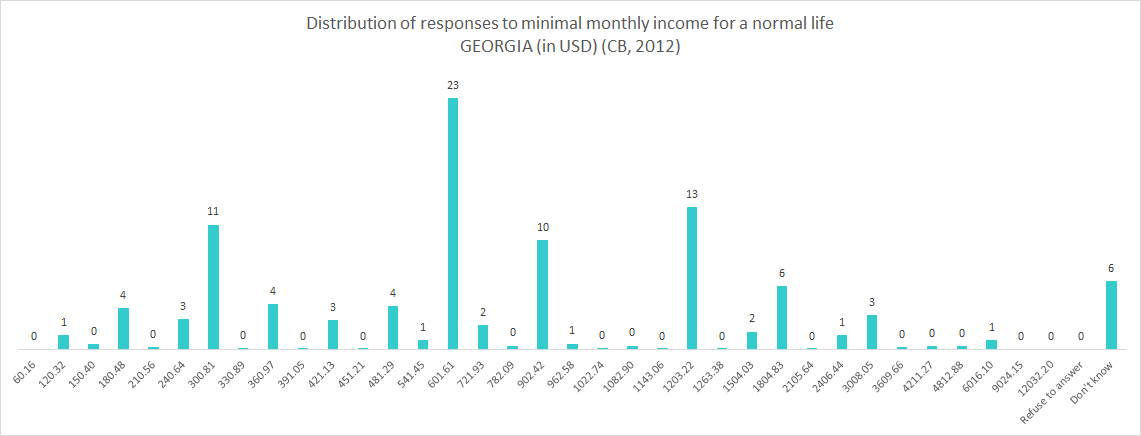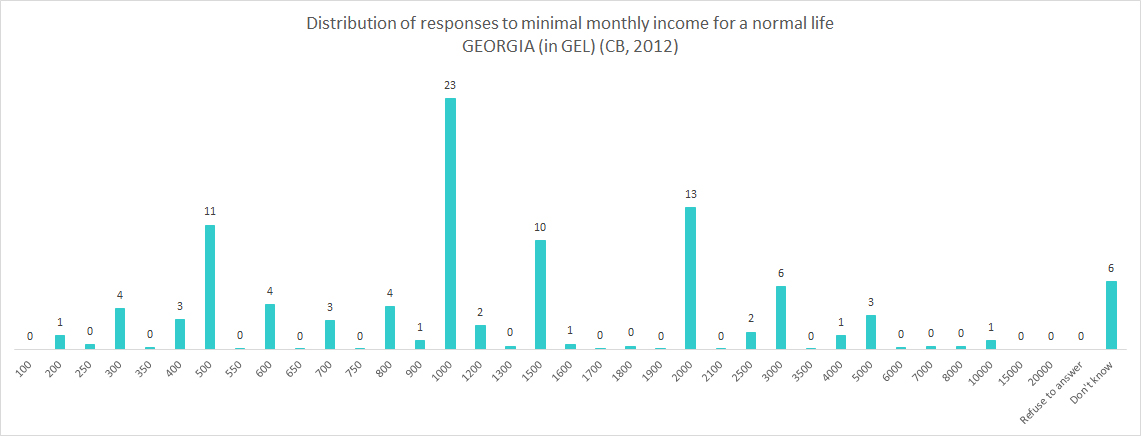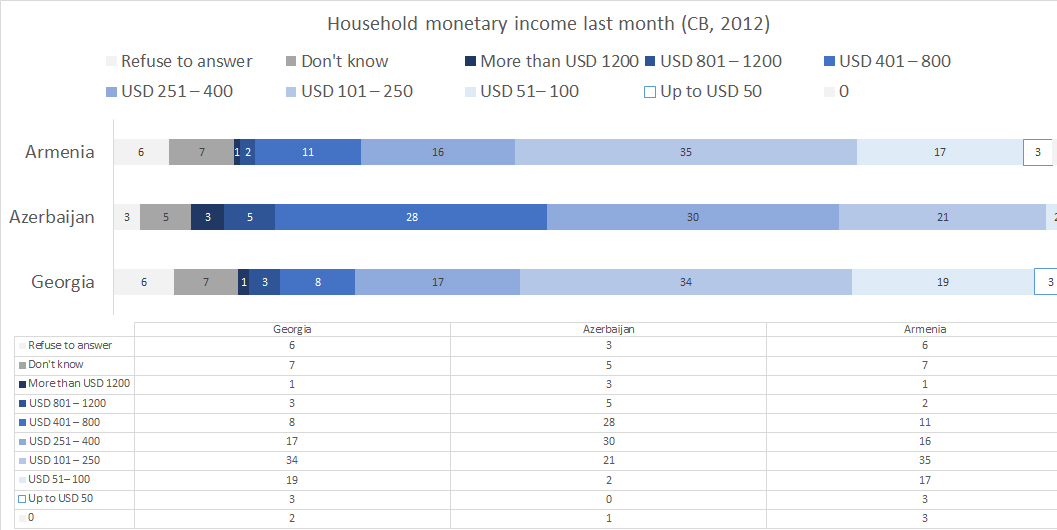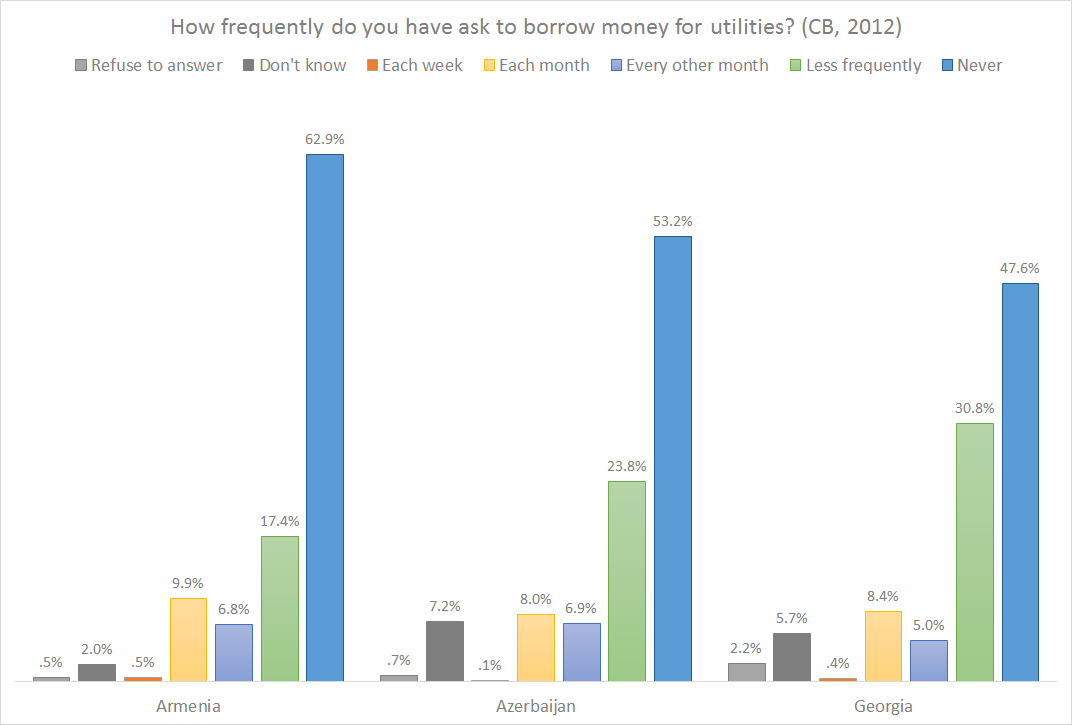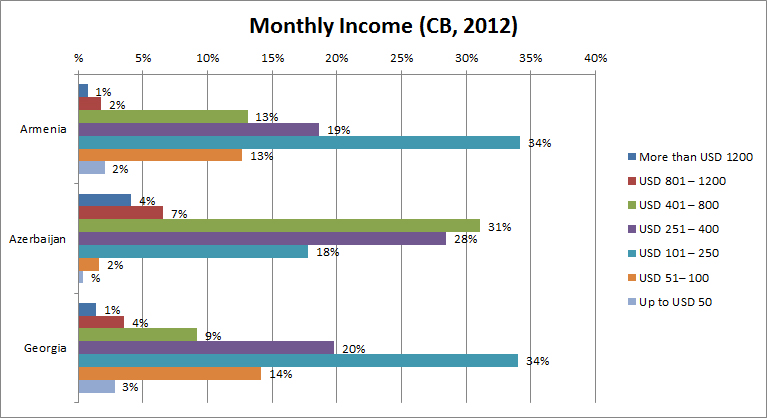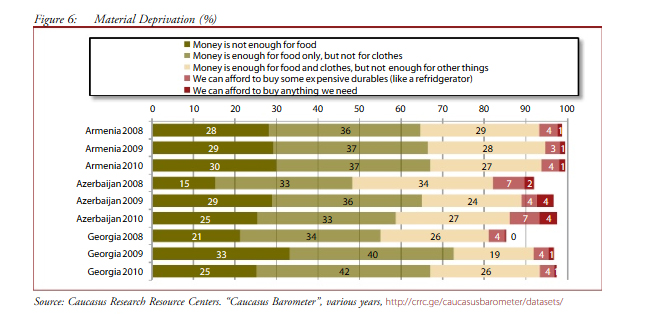Monthly income “for a normal life”

Since it seems like people enjoyed my last post about poverty, I thought I’d do a quick additional analysis. (By the way, ALL posts related to poverty are tagged for your easy browsing). And why do I, a scholar of technology do all this analysis of poverty? Because my research is actually about technology and inequality. And poverty is a very important topic to me. I wrote a paper a few years ago about the challenges of measuring poverty in the South Caucasus (I spent many months of my PhD dissertation tearing this issue apart. I’m still not satisfied with the ways of measuring this, but alas, other projects call to me.)
But here’s some interesting analysis – in the 2012 Armenians, Azerbaijanis, and Georgians were asked how much income would be required every month at minimum to live a normal life. They answered in their own currency, but this is converted to a consistent American dollar.
Armenians and Georgians answered about the same (note the ranges in local currency though – I can imagine people answering a random round number), but Azerbaijanis felt that a household would need about USD1600 a month to live a normal life. Obviously I am a foreigner, but I can certainly attest that living in Baku, and consumer goods in Azerbaijan more generally, are much more expensive than in Armenia or Georgia. And apparently my own observations are not far off.
When broken down by region, Armenia and Georgia end up being pretty close again, with Tbilisi being slightly more expensive than Yerevan, in terms of what people think that need for a normal life.
Looking at the distribution of Armenian answers, most people said 200000 or 300000 AMD (490 or 737 in USD).
Most Azerbaijanis said 1000 AZN (1282 in USD).
For Georgians, most said 1000 GEL (602 USD).
This confirms that a lot of people are just picking a round number. But still, it is interesting to look at.
Ironically, when looking at the actual household monthly monetary income, very few South Caucasians are actually making as much as they say they need for a normal life. So does this mean that people strongly feel that they need more? I would assume. Or perhaps there are additional sources of income – remittances, borrowing, credit, etc. that are not factored in here. If less than 3% of Armenians are making as much as they said they need for a normal life, what kind of lives are people leading?
